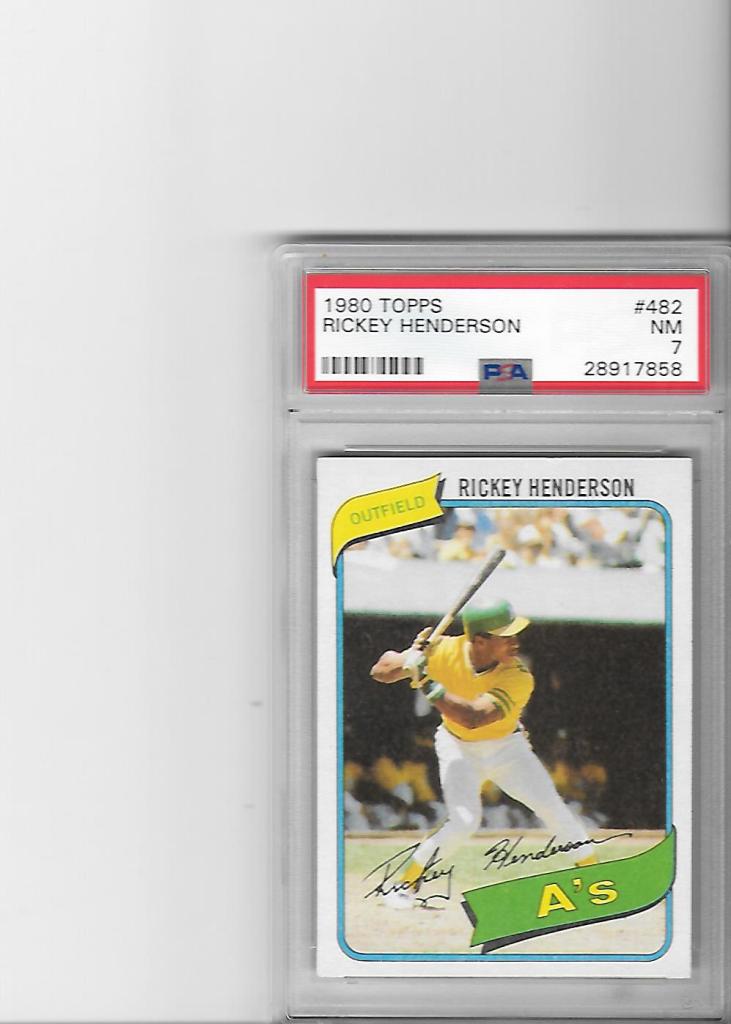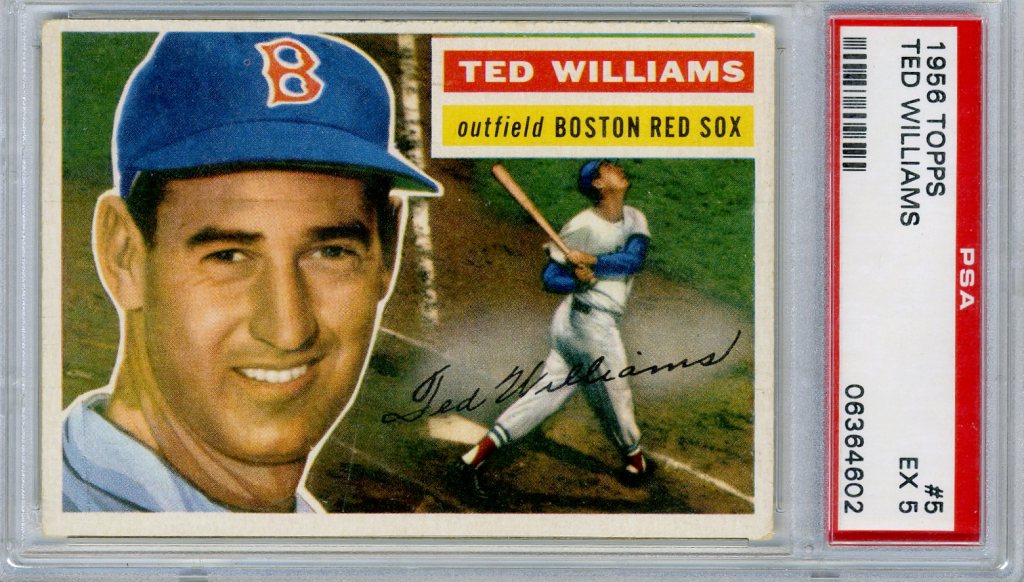Prior to the 1980’s, most kids who collected baseball cards weren’t concerned with the condition of the cards. We wrapped them in rubber bands, put them in the spokes of our bicycle tires, flipped them against the wall (in a contest to win cards from other boys) and occasionally even wrote on them with a pen or pencil. So, today, when someone has a 1980 Rickey Henderson card, the first question is “what’s the condition?”
As with most hobbies, the condition (of stamps, coins, comic books, etc.) will determine the real value in the marketplace. For baseball cards, the key factors are centering, corner wear, creases and stains. Prior to the mid-90’s, collectors and dealers used a subjective method of determining if a card was “Mint” or “Near-Mint” or “Excellent”. With the hobby changing and the introduction of the Internet, buyers & sellers needed a better way to agree on condition…and, therefore, pricing. Into that void stepped the third-party authentication and grading companies, who would give the card a number grade (1-10), encase it in a tamper-proof holder and register the card with a serial number. Eventually, this would become an industry standard…especially for older cards.
The value of a particular card can vary greatly depending on the condition. The monthly Beckett price guide shows the ’80 Henderson Rookie Card as having a book value of $60. That estimate, however, assumes that the card is in NM (Near-Mint) condition…defined as a “7” by the grading company.

Of course, the real world isn’t defined by estimates and the current market price of an ’80 Henderson that is graded “7” is about $120. The real key, however, is the differential of the values on the same card based on condition. The most recent sales on Internet sites (like eBay) show the following for our ’80 Henderson example…
“5” = $60
“6” = $70
“7” = $120
“8” = $275
“9” = $1,750
As you can see, each level represents an increase in value for the seller and as the condition gets better, the price increases dramatically. Could you tell the difference between a “7” and an “8” with the naked eye? Probably not, but the companies that specialize in grading have equipment that can see imperfections in order to gauge centering and wear exactly.
What probably caught your eye is the huge difference between a card graded “8” and one graded “9”. This is exactly why the baseball card hobby is in an unusual place in 2021. During the pandemic, while people were stuck at home with no sports on TV and social gatherings at a minimum, they found all those cards that they had squirreled away in the garage or attic or extra bedroom. When they discovered a Henderson card that was possibly worth $60, they decided that by grading it, they would get rich…because, of course, theirs must be a “9”. So many cards were sent in for processing that it essentially shut down the two major grading companies due to the overwhelming demand and the Henderson is just an example. Orders were taking 6-8 months or longer and the grading providers stopped taking orders until they could get caught up. That is where the industry sits at the moment and no one knows exactly when we’ll be back to normal. It will come as no surprise to you that thousands of collectors will be disappointed when their orders come back. By nature, we are all optimists, but the fact is that over 23,000 Henderson RC’s have been graded by PSA and less than 10% of them have judged to a “9”. After all, these are 40 year-old pieces of cardboard.
Grading is an important part of the hobby but collectors must understand that gauging if a card should be graded is an essential step. If you’re building a set of cards from the 1950’s or 1960’s, by all means consider grading the major stars. If you are collecting the cards of a certain player or team, getting them graded for display in your office is a great idea. My Ted Williams rookie card is from 1939 and it is graded a “2” but that’s OK because it is my Ted Williams rookie card.

The other factor in grading your cards is that it proves the card is authentic and has not been altered. It is not unheard of to find older cards that have been trimmed (to shave off edge wear or improve centering) or retouched with a marker to make the card look more appealing. So, if you’re selling older baseball cards, don’t assume they’re in NM condition…be prepared for a more realistic offer. If you’re keeping your cards, think about grading them to improve your ability to display your collection while protecting the cards from damage.
The entire grading process has also created new markets and challenges for card collectors. One of the grading companies has even created a “Set Registry” where collectors list their sets of vintage cards in which every card has been graded. Currently, there are thousands of baseball card sets registered on the website by collectors and some feature cards in amazing condition. For example, there are two 1956 Topps sets that have an average grade of “9” (Mint Condition). Can you imagine the journey those collectors made to acquire 342 cards to meet that standard? What would that set be worth? One industry magazine estimates the value at $300,000+ but we’ll never really know because the sets probably won’t ever become available. In the meantime, I’ll be very happy with my 1956 Topps set, which based on the dozen or so star cards that have been graded, averages about a “5” (Excellent Condition).

As always, my advice is to collect, not speculate.
I enjoyed the article and can relate to it.
LikeLike